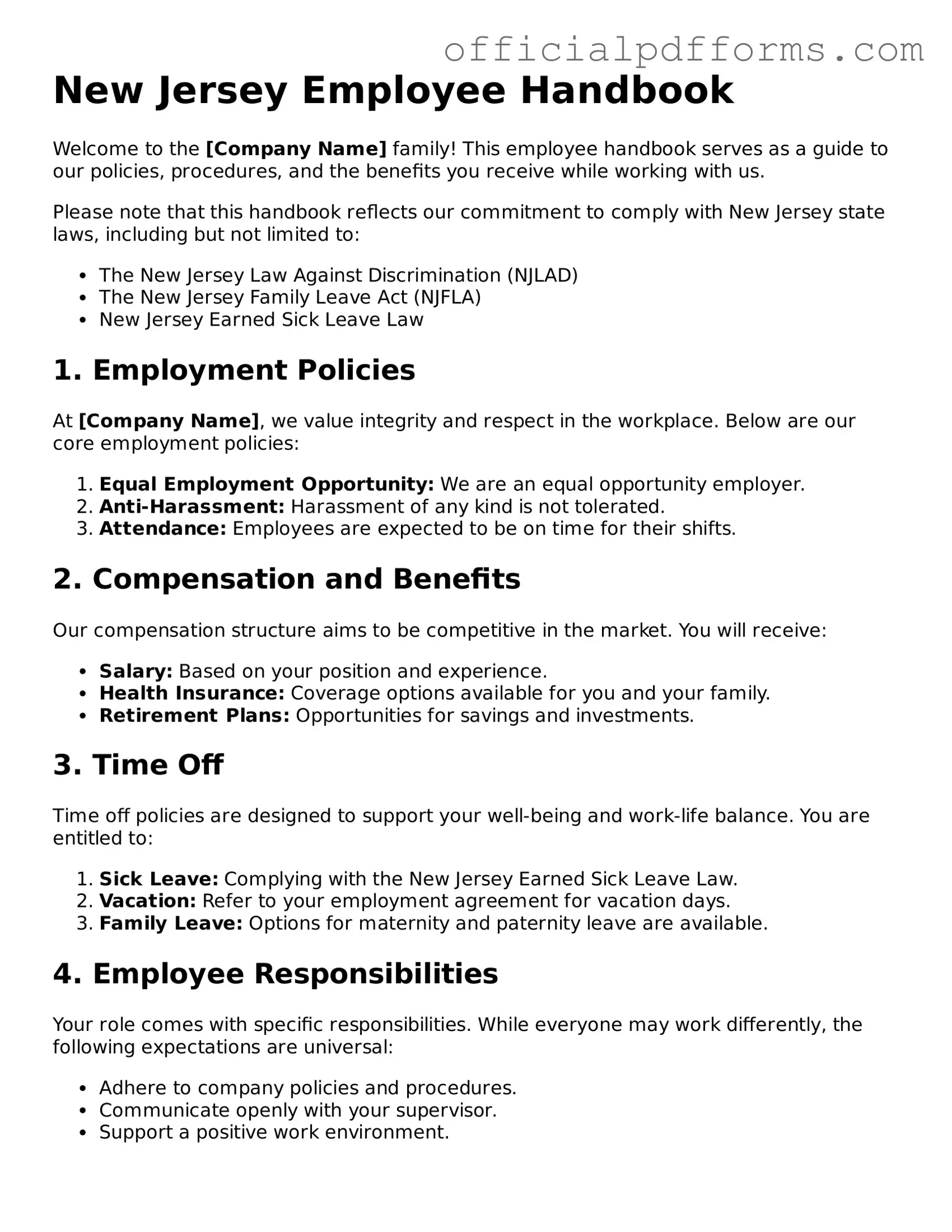Printable New Jersey Employee Handbook Template
The New Jersey Employee Handbook form is a crucial document that outlines workplace policies, employee rights, and company expectations. It serves as a guide for both employers and employees, ensuring that everyone is on the same page regarding workplace conduct and procedures. For a seamless experience, consider filling out the form by clicking the button below.
Access Form Online
